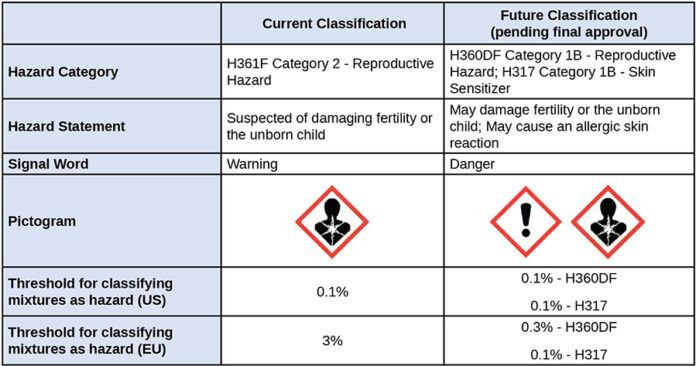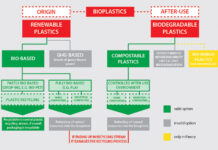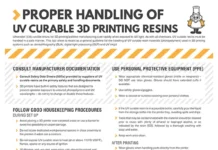Prepared by RadTech Environmental Health and Safety Committee, Michael Gould, Rahn, Chair; and Shannon Gainey, TechCheck LLC, Consultant
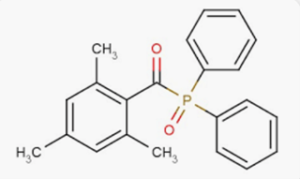
TPO, a widely used material in photopolymer additive manufacturing (Figure 1), had been classified as a Category 2 reproductive toxin when first registered under the European Union’s CLP regulation (Regulation (EC) 1272/2008). In June 2020, Sweden proposed to the Committee for Risk Assessment (RAC) to modify the classification of TPO to a Category 1B, H360DF, reproductive toxin, as well as adding skin sensitization, Category 1B, H317. In the fall of 2021, the European Union’s RAC agreed upon the updated classification.
The European Commission has since been reviewing the RAC opinion to update the classification. It is expected for the European Commission to make a decision on the updated classification by the end of 2023.
If the EU Commission adopts the updated classification, it will be harmonized under Annex VI of (EC) No 1272/2008 (the European Union’s CLP regulation) and will become legally binding. According to input from others in the chemical industry, TPO likely is going to be added to ATP 21 (targeted to be released around January 2024), whereby mandatory labeling will be required after a transition period of 18 months (estimated timing in mid-2025).
Table 1 compares the current classification of TPO with the classification pending final approval of the European Commission.
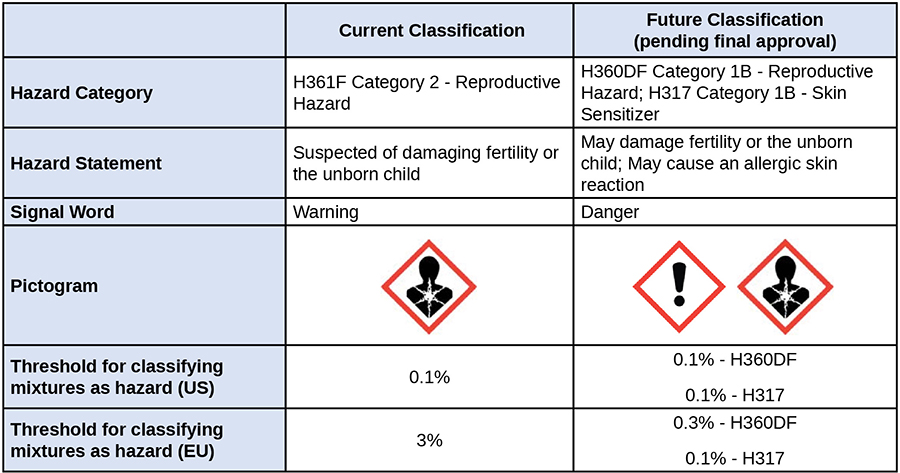
Although the harmonized classification only is legally binding in the European Union, the updated classification is based on robust test data. Multinational suppliers of TPO likely will update safety data sheets in all jurisdictions with the new hazard classifications.
TPO Also Recommended for SVHC Inclusion
In addition to the updated classification of TPO, in January 2023, Sweden recommended TPO be prioritized for inclusion on the Substances of Very High Concern (SVHC) list, also called the Candidate List. Substances fulfilling one or more of the criteria defined in Article 57 of the REACH Regulation can be identified as a SHVC. Once a substance is added to the Candidate List, it then can be subject to future Authorization and Restriction under the REACH regulation.
The comment period is open until April 3, 2023. Once the comment period closes, the RAC will review all comments and make a final determination regarding whether TPO should be added to the SVHC list.
What happens if TPO is identified as a SVHC?
Inclusion on the Candidate List brings obligations that are effective immediately from the date of listing. The following obligations apply to TPO as a substance or part of a mixture, but also apply to its use in articles:
Obligations for Suppliers of Substances/Mixtures:
- EU and EEA suppliers of TPO at concentrations > 0.1% must update the SDS to include TPO within Section 15 of the SDS, identifying it as a SVHC.
- The safe use of TPO must be communicated appropriately.
Obligations for Article Manufacturers:
- EU or EEA suppliers of articles with TPO having measurable concentrations of unreacted TPO > 0.1% must provide sufficient information to allow safe use of the article.
- EU or EEA producers or importers of articles are required to notify ECHA if the article contains TPO (or any substance on the Candidate List). The obligation applies IF the substance is present in the articles totaling over one tonne per producer or importer per year AND if the substance is at a measurable concentration >0.1% w/w.
- EU suppliers of articles containing substances on the Candidate List in a concentration >0.1% w/w must submit information on the articles to ECHA via the SCIP database.
The concentration thresholds for reporting stated above only apply to TPO when “uncured.” Given that TPO is intended to react during cure, articles manufactured with TPO-containing formulations likely do not contain TPO at concentrations >0.1% w/w after cure, and therefore reporting would not be required. It is important to assess specific products to determine specific reporting obligations.
PAMA and RadTech continue to monitor the regulatory landscape as it affects members of the UV-curing industry. To join RadTech’s efforts or to receive more information on the impact of regulatory action on the energy-curing industries, visit www.radtech.org.



